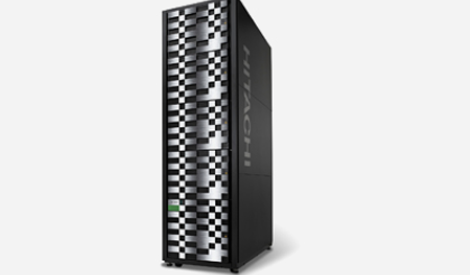Hitachi Data Systems is taking a leaf out of the active-active data center failover manual, applying the method to its new converged infrastructure designed with extra performance, to keep up with the demand for continual data access and need to migrate data in the Cloud.
Its new Hitachi Virtual Storage Platform G1000, teamed with a new operating system - the Hitachi Storage Virtualization Operation System (SVOS) which execs say will now underpin its technologies moving forward - is aimed at the higher end of the market, allowing for more than 3m IOPS with 48Gbps of usable bandwidth.
It will also help Hitachi develop its own capabilities in the services arena, according to Hitachi CTO for EMEA Bob Plumridge.
He said the system will be used for cloud bursting Hitachi’s own client environments into Hitachi-run data centers.
Plumridge said the additional performance was required to enable the active-active configuration of the new storage architecture, which removes the logical device from a single machine placing it instead across each storage machine in use.
Hitachi has removed the passive machine for failover, and runs each machine as an active configuration to allow for highly available environments.
It is also capture data in a virtual storage machine which spans each physical box.
“This means we can migrate the entire virtual storage machine to another so that when something gets replaced, upgraded or changed we can do a non-disruptive migration of all that data contained inside,” Plumridge said.
“It works well for Hitachi moving into managed services as well, as when customers have a huge peak we don’t have to worry about what they physically have on site. We can burst it somewhere else.”
Hitachi has quadrupled the amount of processing power it has in its Hitachi Virtual Storage Platform G100, the number of cores it has and the amount of virtual storage.
It has up to 8-nodes of Hitachi NAS Platform clusters and already comes with integration with SAP HANA, as well as VMware and Microsoft private cloud.
It can offer Hitachi’s Dynamic Tierring as a standalone system or can be used as a heterogeneous pool, with racks placed up to 100m apart in the data center.
The new operating system, according to Hitachi, will lay the foundation for Hitachi’s future developments.
“In the past we had a different operating system for different products,” Plumridge said.
This new one-OS-fits-all approach will reduce the amount of cost it takes Hitachi to develop infrastructure, according to Plumridge, who promised this will lead on to cost savings for customers, as well as additional functionality and reliability for future systems.
“We think this will eliminate the whole back end of engineering,” Plumridge said.
Hitachi is also providing restful APIs across all its management software. It released a new version of its Command Suite platform which also includes features in SVOS.
Hitachi labels these new launches under the tagline of ‘Continuous Cloud Infrastructure’ and Plumridge said you will see more offerings – many targeted at specific vertical industries – in future.
Hitachi recently moved its rail division from Japan to London based on a contract signed for running the HRE Class 395 high-speed trains from London to Kent.
Hitachi owns the trains but is being paid by the line operator based on performance (punctuality and reliability) and big data is playing a large part in how it is running this 27-year contract.
“Hitachi is doing this using technology, and the contract is really about managing speed, reliability, position of trains from a hardware and software point of view,” Plumridge said.
“It vertical areas like this that you will see special systems like we have just released designed for the handling of data in future.”
Prior to Hitachi’s release yesterday, which FOCUS attended at its European distribution HQ outside Amsterdam, we caught up with Hitachi Data Systems VP and CTO Hu Yoshida. We didn’t know at the time the future technology he was talking about was so close.
You can read his interview with FOCUS online here. It will also be published in full in the next edition of FOCUS magazine, out in May. Sign up for your print or digital edition here.

